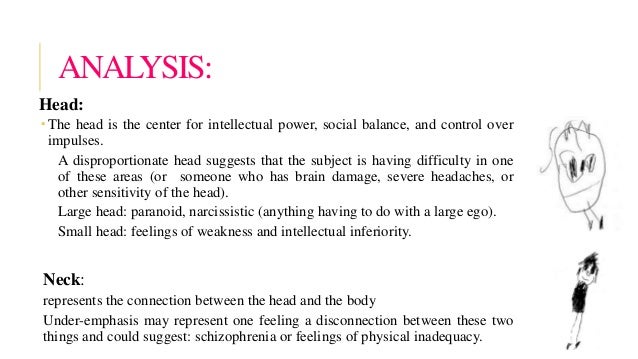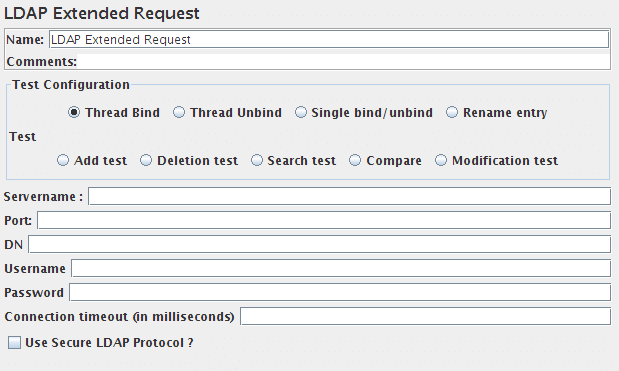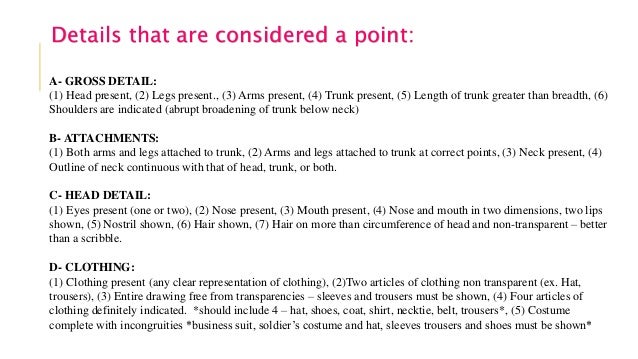Assessment | Biopsychology | Comparative |Cognitive | Developmental | Language | Individual differences |Personality | Philosophy | Social |
Methods | Statistics |Clinical | Educational | Industrial |Professional items |World psychology |

Social Processes:Methodology · Types of test


Please help recruit one, or improve this page yourself if you are qualified.
This banner appears on articles that are weak and whose contents should be approached with academic caution
.
Human figures and instead draw a head, a separate trunk, attached arms and legs, and details such as hands, fingers and clothing (!omas & Silk, 1990). Children sometimes revert to earlier stages and in the same picture might draw one person using a tadpole schema and another using a more advanced mode of representation. GOODENOUGH DRAW – A – PERSON TEST DIRECTIONS: 'I want you to make a picture of a person. Make the very best picture that you can. Take your time and work very carefully. Try very hard and see what a good picture you can make.' TIME: No time limit. Usually 10 minutes will suffice with young children. Draw-a-Person test Quick Reference A projective test developed by the US psychologist Karen Alper Machover (1902–96) and discussed in her book Personality Projection in the Drawing of the Human Figure (1949).
The Goodenough-Harris Draw-A-Man Test or Draw-A-Man Test(DAP, DAP test0 is a psychological projectivepersonality or cognitive test used to evaluate children and adolescents for a variety of purposes.
History[edit | edit source]
Developed originally by Florence Goodenough in 1926, this test was first known as the Goodenough Draw-A-Man test. It is detailed in her book titled Measurement of Intelligence by Drawings. Dr. Dale B. Harris later revised and extended the test and it is now known as the Goodenough-Harris Drawing Test. The revision and extension is detailed in his book Children's Drawings as Measures of Intellectual Maturity (1963). Julian Jaynes, in his 1976 book The Origin of Consciousness in the Breakdown of the Bicameral Mind, wrote that the test is 'routinely administered as an indicator of schizophrenia,' and that while not all schizophrenic patients have trouble drawing a person, when they do, it is very clear evidence of a disorder. Specific signs could include a patient's neglect to include 'obvious anatomical parts like hands and eyes,' with 'blurred and unconnected lines,' ambiguous sexuality and general distortion.[1] There has been no validation of this test as indicative of schizophrenia. Chapman and Chapman (1969), in a classic study of illusory correlation, showed that the scoring manual, e.g., large eyes as indicative of paranoia, could be generated from the naive beliefs of undergraduates.
Nature of the test[edit | edit source]
Test administration involves the administrator requesting children to complete three individual drawings on separate pieces of paper. Microsoft office 2016 torrent. Children are asked to draw a man, a woman, and themselves. No further instructions are given and the child is free to make the drawing in whichever way he/she would like. There is no right or wrong type of drawing, although the child must make a drawing of a whole person each time - i.e. head to feet, not just the face. The test has no time limit, however, children rarely take longer than about 10 or 15 minutes to complete all three drawings. Harris's book (1963) provides scoring scales which are used to examine and score the child's drawings. The test is completely non-invasive and non-threatening to children - which is part of its appeal.
The purpose of the test is to assist professionals in inferring children's cognitive developmental levels with little or no influence of other factors such as language barriers or special needs. Any other uses of the test are merely projective and are not endorsed by the first creator.
See also[edit | edit source]
- House Tree Person Test (HTP)

References[edit | edit source]
- ↑Julian Jaynes, J. (2000), The Origin of Consciousness in the Breakdown of the Bicameral Mind, Mariner Books, ISBN 978-0-618-05707-8
Draw A Person Test By Machover
- Chapman, L. J., & Chapman, J. P. (1969). Illusory correlation as an obstacle to the use of valid psychodiagnostic signs. Journal of Abnormal Psychology, 74, 271-280.
- Goodenough, F. (1926). Measurement of intelligence by drawings. New York: World Book Co.
- Harris, D. B. (1963). Children's drawings as measures of intellectual maturity. New York: Harcourt, Brace & World, Inc.
- Ter Laack, J.; de Goede, M.; Aleva, A. 'The Draw-A-Person Test: An Indicator of Children's Cognitive and Socioemotional Adaptation?'. Heldref Publications.
- Williams, Simon D.; Wiener, Judy; MacMillan, Harriet. 'Build-A-Person Technique: An examination of the validity of human-figure features as evidence of child sexual abuse.'. Elsevier Science.
Draw A Person Test Norms
Social Processes:Methodology · Types of test
Please help recruit one, or improve this page yourself if you are qualified.
This banner appears on articles that are weak and whose contents should be approached with academic caution
.
Human figures and instead draw a head, a separate trunk, attached arms and legs, and details such as hands, fingers and clothing (!omas & Silk, 1990). Children sometimes revert to earlier stages and in the same picture might draw one person using a tadpole schema and another using a more advanced mode of representation. GOODENOUGH DRAW – A – PERSON TEST DIRECTIONS: 'I want you to make a picture of a person. Make the very best picture that you can. Take your time and work very carefully. Try very hard and see what a good picture you can make.' TIME: No time limit. Usually 10 minutes will suffice with young children. Draw-a-Person test Quick Reference A projective test developed by the US psychologist Karen Alper Machover (1902–96) and discussed in her book Personality Projection in the Drawing of the Human Figure (1949).
The Goodenough-Harris Draw-A-Man Test or Draw-A-Man Test(DAP, DAP test0 is a psychological projectivepersonality or cognitive test used to evaluate children and adolescents for a variety of purposes.
History[edit | edit source]
Developed originally by Florence Goodenough in 1926, this test was first known as the Goodenough Draw-A-Man test. It is detailed in her book titled Measurement of Intelligence by Drawings. Dr. Dale B. Harris later revised and extended the test and it is now known as the Goodenough-Harris Drawing Test. The revision and extension is detailed in his book Children's Drawings as Measures of Intellectual Maturity (1963). Julian Jaynes, in his 1976 book The Origin of Consciousness in the Breakdown of the Bicameral Mind, wrote that the test is 'routinely administered as an indicator of schizophrenia,' and that while not all schizophrenic patients have trouble drawing a person, when they do, it is very clear evidence of a disorder. Specific signs could include a patient's neglect to include 'obvious anatomical parts like hands and eyes,' with 'blurred and unconnected lines,' ambiguous sexuality and general distortion.[1] There has been no validation of this test as indicative of schizophrenia. Chapman and Chapman (1969), in a classic study of illusory correlation, showed that the scoring manual, e.g., large eyes as indicative of paranoia, could be generated from the naive beliefs of undergraduates.
Nature of the test[edit | edit source]
Test administration involves the administrator requesting children to complete three individual drawings on separate pieces of paper. Microsoft office 2016 torrent. Children are asked to draw a man, a woman, and themselves. No further instructions are given and the child is free to make the drawing in whichever way he/she would like. There is no right or wrong type of drawing, although the child must make a drawing of a whole person each time - i.e. head to feet, not just the face. The test has no time limit, however, children rarely take longer than about 10 or 15 minutes to complete all three drawings. Harris's book (1963) provides scoring scales which are used to examine and score the child's drawings. The test is completely non-invasive and non-threatening to children - which is part of its appeal.
The purpose of the test is to assist professionals in inferring children's cognitive developmental levels with little or no influence of other factors such as language barriers or special needs. Any other uses of the test are merely projective and are not endorsed by the first creator.
See also[edit | edit source]
- House Tree Person Test (HTP)
References[edit | edit source]
- ↑Julian Jaynes, J. (2000), The Origin of Consciousness in the Breakdown of the Bicameral Mind, Mariner Books, ISBN 978-0-618-05707-8
Draw A Person Test By Machover
- Chapman, L. J., & Chapman, J. P. (1969). Illusory correlation as an obstacle to the use of valid psychodiagnostic signs. Journal of Abnormal Psychology, 74, 271-280.
- Goodenough, F. (1926). Measurement of intelligence by drawings. New York: World Book Co.
- Harris, D. B. (1963). Children's drawings as measures of intellectual maturity. New York: Harcourt, Brace & World, Inc.
- Ter Laack, J.; de Goede, M.; Aleva, A. 'The Draw-A-Person Test: An Indicator of Children's Cognitive and Socioemotional Adaptation?'. Heldref Publications.
- Williams, Simon D.; Wiener, Judy; MacMillan, Harriet. 'Build-A-Person Technique: An examination of the validity of human-figure features as evidence of child sexual abuse.'. Elsevier Science.
Draw A Person Test Norms
Draw A Person Test Pdf
| This page uses Creative Commons Licensed content from Wikipedia (view authors). |
